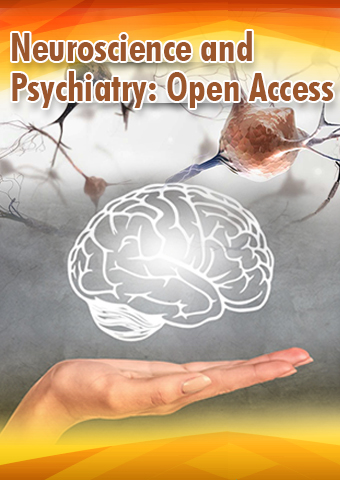Perspective - Neuroscience and Psychiatry: Open Access (2023) Volume 6, Issue 6
The Intricate World of Neurons in the Brain
- Corresponding Author:
- Philippe Vincent
Department of Psychology and Neuroscience, University of British Columbia, Vancouver, Canada
E-mail: philippe.vin@umontreal.ca
Received: 01-11-2023, Manuscript No. NPOA-23-119641; Editor assigned: 04-11-2023, PreQC No. NPOA-23-119641 (PQ); Reviewed: 18-11-2023, QC No. NPOA-23-119641; Revised: 24-11-2023, Manuscript No. NPOA-23-119641 (R); Published: 04-12-2023, DOI: 10.47532/npoa.2023.6(6).147-149
Introduction
The brain, often referred to as the most complex organ in the human body, is a remarkable network of billions of neurons that enable us to think, learn, remember, and interact with the world around us. Neurons are the fundamental building blocks of the brain, and their intricate functions are essential for our understanding of how our minds work. In this article, we will delve into the fascinating world of neurons, exploring their structure, types, communication, and the crucial role they play in shaping our thoughts and behaviors.
Description
Neurons, also known as nerve cells, are the primary functional units of the nervous system. These highly specialized cells are the basic building blocks of the brain and play a central role in transmitting information, processing signals, and coordinating various functions within the body. Neurons are responsible for all cognitive and sensory processes, making them the foundation of our ability to think, feel, and respond to our environment.
Neuron structure
Neurons have a distinctive structure that allows them to transmit and receive electrical and chemical signals. The key components of a typical neuron include:
Cell body (Soma): The cell body is the central part of the neuron and contains the nucleus, which houses the genetic material. It is responsible for maintaining the cell’s metabolic functions.
Dendrites: Dendrites are branching extensions that extend from the cell body, resembling the branches of a tree. They receive incoming signals from other neurons or sensory receptors and transmit them to the cell body.
Axon: The axon is a long, slender extension that transmits signals away from the cell body. It is often covered by a fatty substance called myelin, which insulates the axon and enhances signal conduction.
Axon terminals: At the end of the axon, there are specialized structures known as axon terminals. These structures contain synaptic vesicles filled with neurotransmitters, which are essential for communication between neurons.
Types of neurons
There are three primary types of neurons, each with distinct functions within the nervous system:
Sensory neurons: Sensory neurons are responsible for transmitting sensory information from sensory receptors (e.g., in the skin, eyes, ears) to the Central Nervous System (CNS), which includes the brain and spinal cord. These neurons play a critical role in our ability to perceive and respond to the external environment.
Motor neurons: Motor neurons transmit signals from the CNS to muscles and glands, enabling voluntary and involuntary movements. They are responsible for actions such as muscle contractions and the regulation of glandular secretions.
Interneurons: Interneurons, also known as association neurons, are found within the CNS. They facilitate communication between sensory neurons and motor neurons. Interneurons are crucial for processing information, making decisions, and orchestrating complex neural responses.
Neuron communication
Neurons communicate through a combination of electrical and chemical signals. The process of neuron communication involves several key steps:
Resting potential: Neurons maintain a resting potential, a stable electrical charge, due to an uneven distribution of ions inside and outside the cell. This resting potential is essential for the neuron to respond to incoming signals.
Action potential: When a neuron receives a strong enough stimulus from its dendrites, it may generate an action potential. This is a rapid, temporary change in electrical voltage that travels along the axon. It serves as the neuron’s method of transmitting information over long distances.
Synaptic transmission: When the action potential reaches the axon terminals, it triggers the release of neurotransmitters from synaptic vesicles into the synapse, which is the small gap between neurons. Neurotransmitters bind to receptors on the dendrites of the receiving neuron, transmitting the signal from one neuron to the next.
Reuptake: After transmitting the signal, excess neurotransmitters are taken back up by the sending neuron in a process called reuptake. This mechanism helps regulate the balance of neurotransmitters in the synapse.
Postsynaptic potential: The binding of neurotransmitters to receptors on the receiving neuron’s dendrites can result in either excitatory or inhibitory postsynaptic potentials. These potentials determine whether the receiving neuron will generate an action potential and pass the signal along.
The role of neurons in cognition
Neurons are the foundation of cognition, as they enable various cognitive processes that shape our thoughts, memories, emotions, and behaviors. These processes include:
Learning and memory: Neurons are crucial for forming, storing, and retrieving memories. When we learn something new, connections between neurons are strengthened, facilitating memory formation.
Emotion: Neurons are involved in the regulation of emotions. Various regions of the brain, connected by neural networks, influence our emotional experiences and responses.
Decision making: Decision-making involves complex interactions between neurons in different brain regions. The brain evaluates options, weighs pros and cons, and ultimately guides our choices and actions.
Problem solving: Problem-solving relies on the brain’s ability to process information, recognize patterns, and make decisions based on available data. Neurons play a fundamental role in these cognitive processes.
Neurons and neurological disorders
Disruptions in the structure and function of neurons can lead to neurological disorders and conditions. Some common examples include:
Alzheimer’s disease: Alzheimer’s disease is characterized by the accumulation of abnormal proteins in the brain, leading to the degeneration of neurons and cognitive decline.
Parkinson’s disease: Parkinson’s disease involves the loss of dopamine-producing neurons, leading to motor dysfunction and other cognitive and emotional changes.
Multiple sclerosis: Multiple sclerosis is an autoimmune disorder that damages the myelin sheath of neurons, causing disruptions in signal transmission.
Epilepsy: Epilepsy is characterized by abnormal electrical activity in the brain, resulting in seizures.
Stroke: A stroke occurs when there is a sudden disruption of blood flow to the brain, leading to brain cell damage and various neurological symptoms.
The future of neuron research
Advances in technology and neuroscience continue to expand our understanding of neurons and their role in the brain. Emerging fields like ontogenetic, which use light to control neuron activity, and connect omics, which map the intricate connections between neurons, promise to provide deeper insights into neural function and dysfunction. This research holds the potential to drive innovations in treating neurological disorders and enhancing our understanding of cognition.
Conclusion
Neurons are the foundational components of the brain, serving as the information processing units that enable cognition, memory, emotion, and behavior. Understanding the structure, function, and communication of neurons is crucial for unraveling the mysteries of the human brain and advancing our knowledge of neurological and cognitive processes. As we continue to explore the intricacies of neurons, we move closer to uncovering the secrets of the mind and the intricate workings of the brain.


